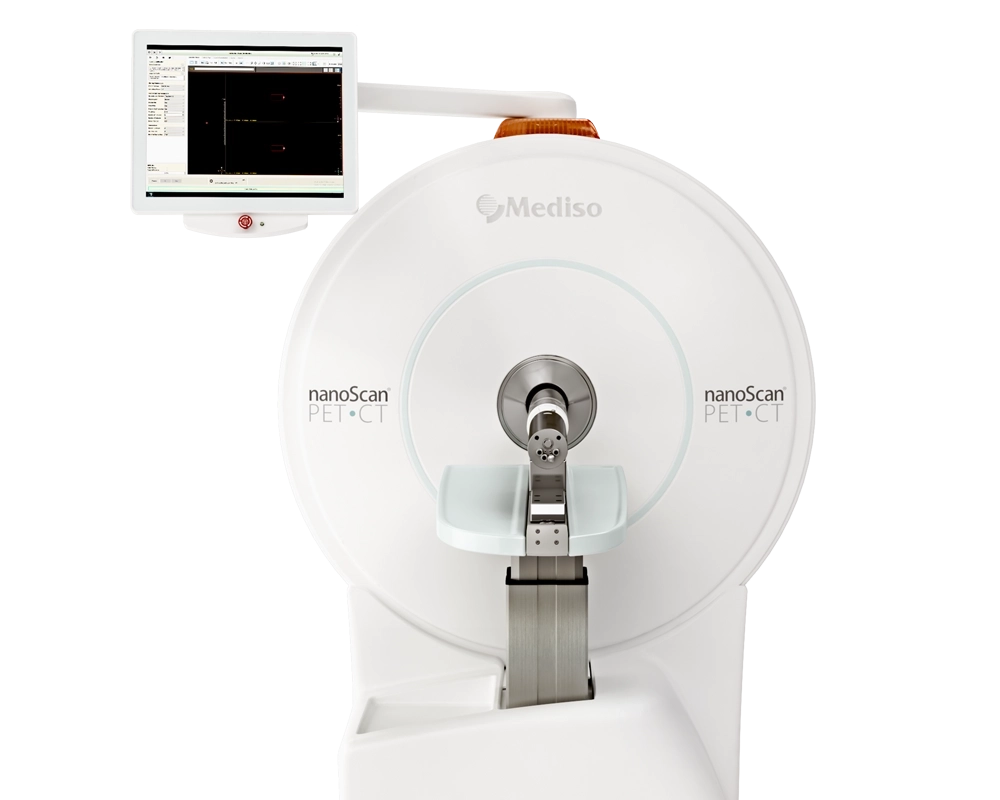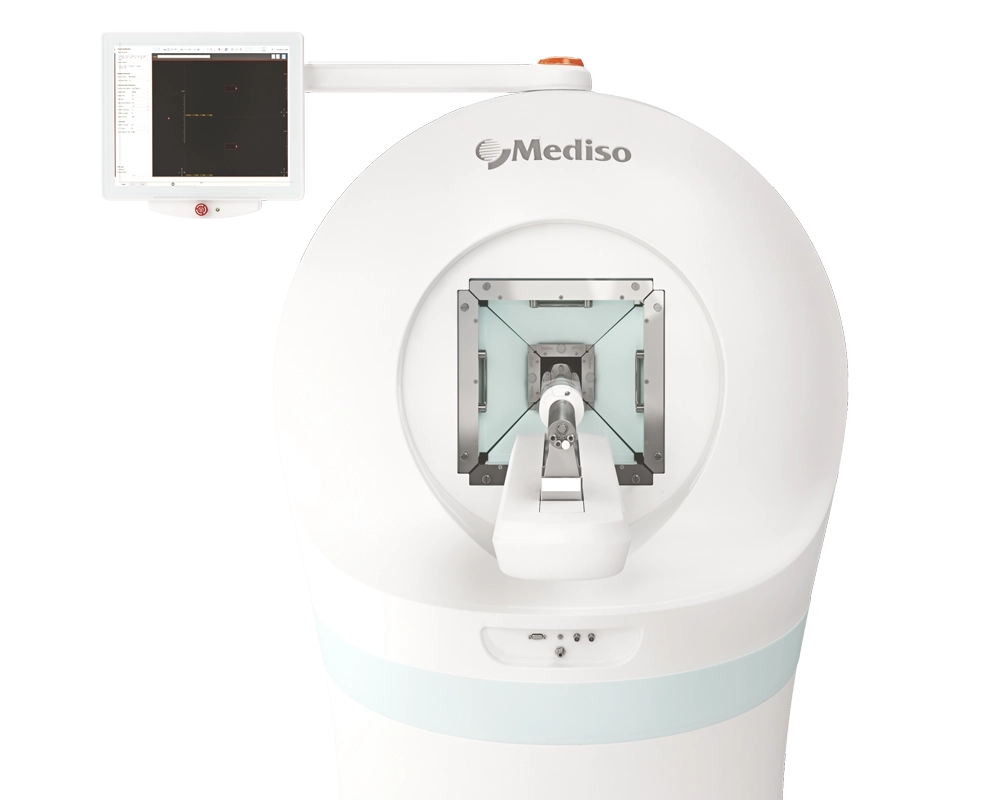[18F]FSPG-PET provides an early marker of radiotherapy response in head and neck squamous cell cancer
2024.08.09.
Khrishanthne Sambasivan et al., NPJ Imaging, 2024
Summary
Radiotherapy is the treatment of choice for early-stage/locally advanced head and neck squamous cell carcinoma (HNSCC) when organ preservation is preferred, or surgery is not an option. Unfortunately, due to radioresistance, locoregional recurrence occurs in 10–50% of cases, depending on the tumor site and stage. Radical radiotherapy for locally advanced HNSCC consists of daily treatment for a period of six to seven weeks and is associated with multiple short- and long-term toxicities. Patients whose tumors do not respond to radiotherapy need to be identified early on during treatment so that they might be considered for radiotherapy dose escalation, addition of hypoxia modification therapy, or even a switch to surgical resection. To maximize the potential of these novel treatment strategies, biomarkers to predict radioresistance or monitor early response are pivotal to facilitate an individualized treatment plan.
One successful strategy used to monitor the efficacy of systemic anti-cancer therapy is the imaging of tumor redox status with (4S)-4-(3-[18F]fluoropropyl)-L-glutamic acid ([18F]FSPG; Supplementary Fig. 1A). Cancer cells experience elevated levels of intracellular ROS and upregulated antioxidant production, such as glutathione (GSH), to circumvent this oxidative stress. [18F]FSPG provides a surrogate marker of GSH utilization through imaging the amino acid transporter system xc−, which delivers intracellular cystine for de novo GSH biosynthesis. In animal models of ovarian cancer, tumor-associated [18F]FSPG retention was reduced following treatment with doxorubicin, which preceded tumor volume changes and correlated with the degree of oxidative stress within the cell. Importantly, [18F]FSPG has been successfully used for cancer imaging in clinical trials, including in HNSCC patients. Given that radiotherapy induces extensive oxidative stress, and the promising ability of [18F]FSPG to monitor this response to therapy, the authors sought to establish if [18F]FSPG could monitor early and localized radiation response in HNSCC.
Results from the nanoScan PET/CT
For the imaging studies, ~3.7 MBq [18F]FSPG was administered intravenously via the tail vein in 100 μL of PBS. The administered dose was calculated from the amount of radioactivity measured in the syringe before and after injection (both decay-corrected to the injection time). Mice were kept at 37 °C and anesthetized throughout the study (1.5–2% isoflurane). At 40 min post-injection, a 20 min PET scan was acquired (Mediso nanoScan PET/CT). Scans were attenuation-corrected from CT images (50 kVp, 480 projections) and static reconstruction was done using the Tera-Tomo 3D reconstruction algorithm (4 iterations, 6 subsets, 400–600 keV, voxel size: 0.4 mm). The resulting reconstructed images were analyzed using VivoQuant software (v. 2.5, Invicro Ltd.). Tumor volumes of interest were drawn using the CT images and expressed as a percentage of the injected dose per g of tissue (%ID/g).
Figure 2. shows the results of the [18F]FSPG PET imaging studies. FaDU tumor xenograft-bearing mice were treated with a fractionated dose of radiotherapy which was previously shown to be efficacious. Following an initial increase in tumor volume, radiotherapy-induced cytostasis between days 5 and 8, with tumors shrinking over the remainder of the 14-day time course. Conversely, there was a linear increase in tumor volume in untreated tumors (Fig. 2A).
The mice bearing FaDU xenografts underwent [18F]FSPG-PET scans at day 0 and 7. Day 7 was selected as the imaging time point as it preceded tumor shrinkage whilst maximizing the delivered radiation dose. Prior to treatment, [18F]FSPG distribution was characterized by high tumor retention (~8% ID/g), with background activity noted only in the pancreas, kidney, and bladder (Fig. 2B). [18F]FSPG tumor retention was well-matched in animals randomly selected by tumor size for either treatment or as controls (7.8 ± 1.9% ID/g vs. 7.9 ± 1.9% ID/g, respectively, n = 6, p = 0.94). By day 7, [18F]FSPG retention was halved in the treated cohort, falling from 7.8 ± 1.9% ID/g to 4.0 ± 1.9% ID/g (p = 0.004, n = 6, Fig. 2B, C). At this time, [18F]FSPG tumor retention remained unchanged in control tumors (7.9 ± 1.9% ID/g and 6.8 ± 1.4% ID/g at day 0 and 7, respectively, p = 0.32, n = 6). The decrease in [18F]FSPG retention in the treated tumors preceded a reduction in tumor volume, which was observed on day 9.
- The authors show for the first time that [18F]FSPG can image early response to radiation therapy.
- Given that [18F]FSPG has already been used in humans to image HNSCC, it could be rapidly rolled out to clinical studies assessing its ability to predict and monitor radiation response in human HNSCC, with the potential to change treatment planning and improve outcomes.
How can we help you?
Don't hesitate to contact us for technical information or to find out more about our products and services.
Get in touch
